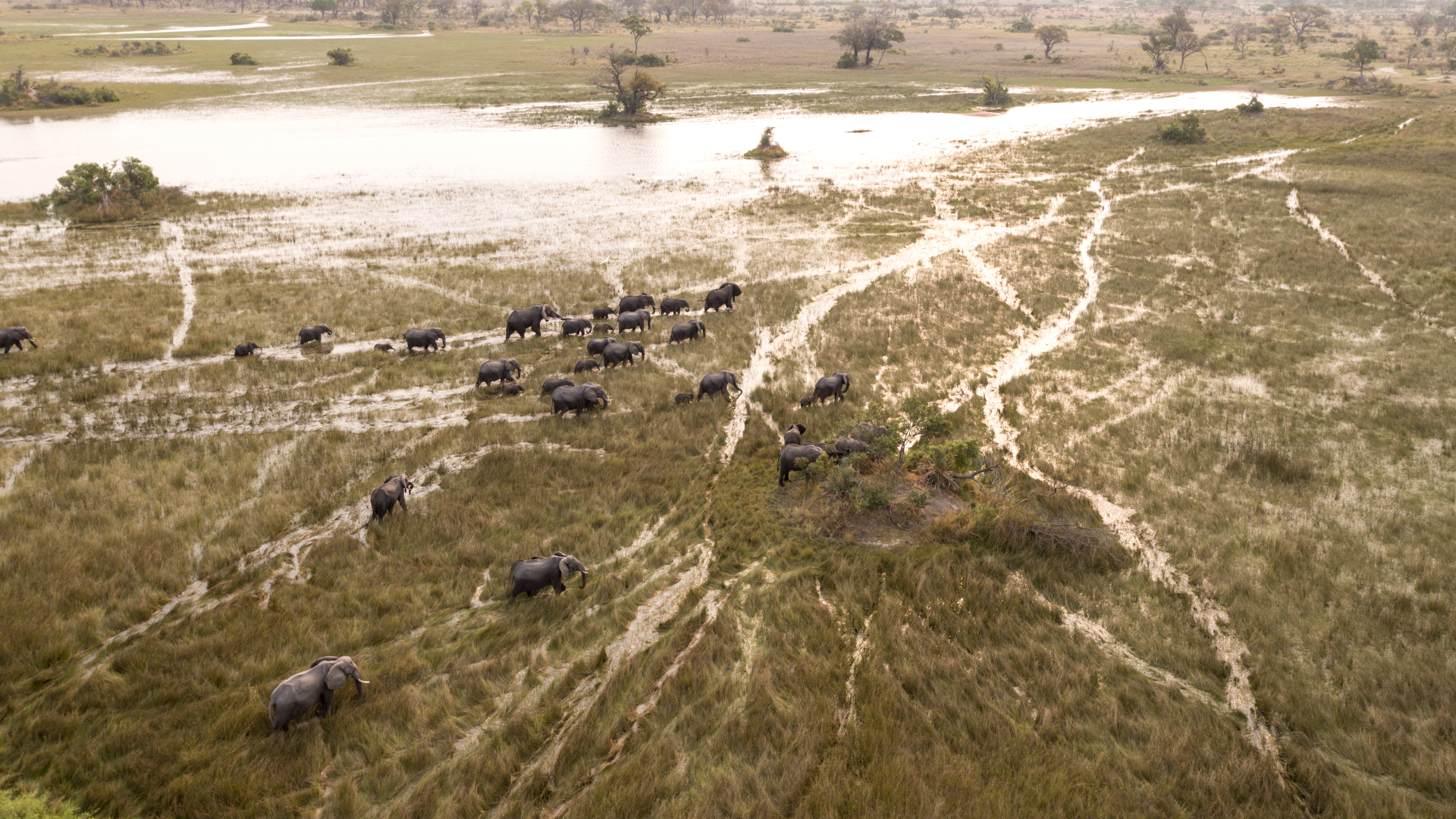
On a sunny August day, I’m sitting in a boat on the Okavango River in northwestern Botswana. A big bull elephant stands at the edge of the water, using his trunk to pull and slap and feed on river grass. The sun is starting to sink into the acacia and palm trees, as we inch ever-closer to the beast.
We’re 30 feet from the bull, then 25, then 15. He stops eating, wheels around and looks at us for a moment before starting to trod our direction.
“Are you sure this is safe?” someone in the boat asks.
“Yes, yes, we’re fine. He’s just checking us out,” our guide insists, chuckling.
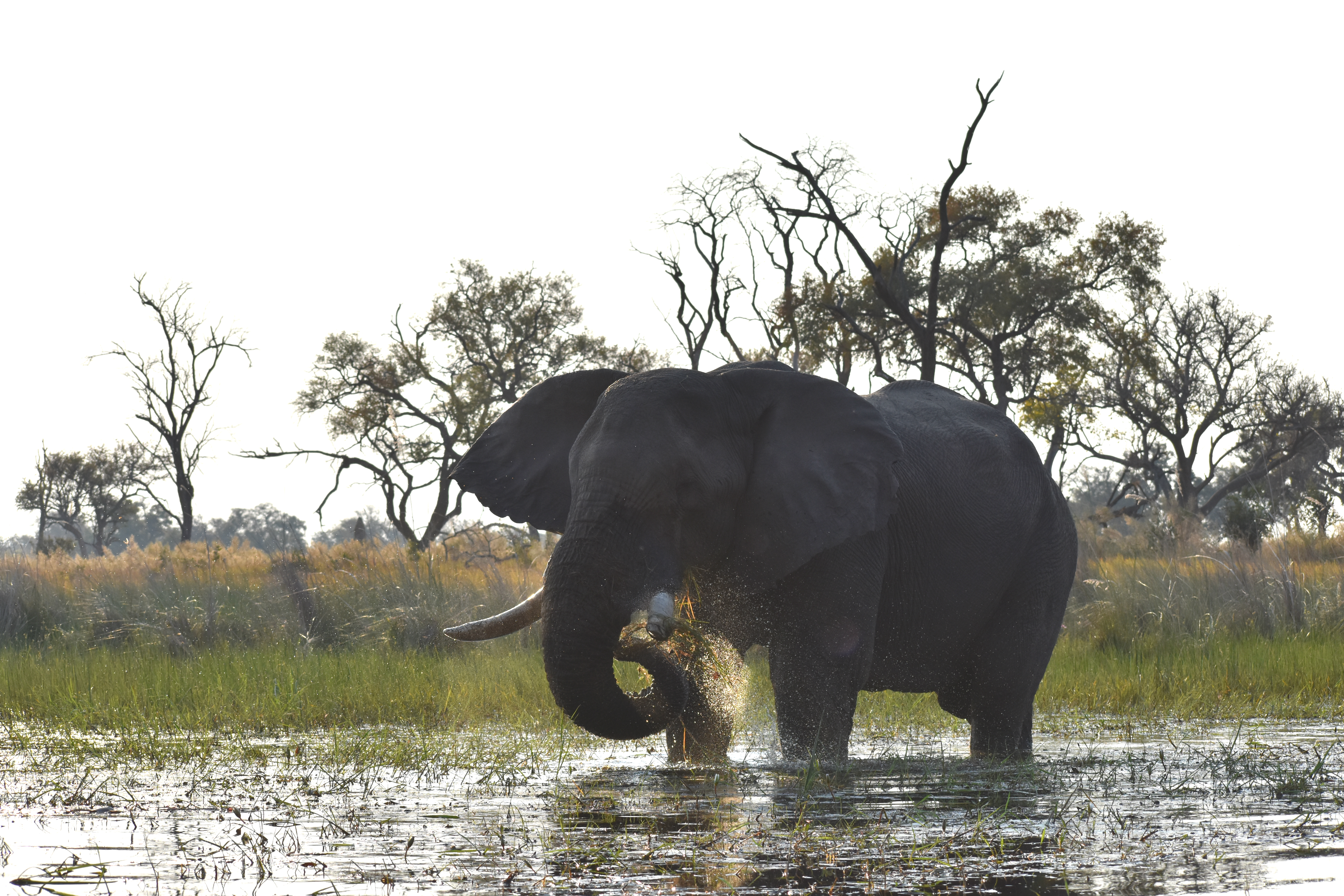
I have never been this close to such an enormous animal. He stares, and I hold my breath, waiting for him to charge. Eventually, he looks back to the grass and the task at hand and we watch him feed — uprooting tufts of grass with his trunk, shaking the excess sand off the roots, and bringing them to his mouth to munch thoughtfully.
Watching the elephant reminds me of the feeling I get when I stand on top of a mountain after a particularly grueling hike. There’s a hint of the sublime: I feel small and slightly terrified and like I’ve never been closer to the heart of things. And it is staring at this bull when I start to appreciate the power of wilderness—the power of proximity that Brad Bestelink believes is one of the best conservation tools we have.
Brad is a filmmaker and the brains behind projects like National Geographic‘s Savage Kingdom. He is also the force behind National Geographic’s feature film, The Flood. The full-length feature tracks the great flood that comes to the Okavango Delta every year and transforms it into one of the richest and wildest areas on the African continent.

While sitting in a film trunk in Mombo, one of Brad’s chief filming locations for both Savage Kingdom 3 and The Flood, a few days after the elephant encounter, the director explains why he makes wildlife films and television shows: not just for the entertainment value, but because viewers become attached and therefore start to care about the animals’ environment.
“We can’t be so detached that we don’t really care about these animals. The Bambis and rainbows that people think of natural history, make people feel like, ‘Oh there’s a game reserve somewhere and the animals are all happy and fine.’ That’s so not the case. You need to care a bit more [rather] than just dismiss it. That’s what we try and do through our films today.”
This isn’t just lip service, either: Brad grew up in the middle of the Okavango. He was, in fact, raised at Eagle Island Lodge. Now a premier safari lodge on the verdant Xaxaba Island next to the Okavango River. Eagle Island was started by his father P.J. Bestelink as the first photographic camp for tourists in the country.
Brad’s grandfather had previously had a large concession to hunt crocodiles, nearly destroying the Okavango’s population, an all-too-familiar story in southern Africa. So when P.J. started his photographic camp, he helped change Botswana’s path. And now, Brad’s life—as a Botswanan and a filmmaker—is inextricably linked to the Okavango Delta, and to its conservation.
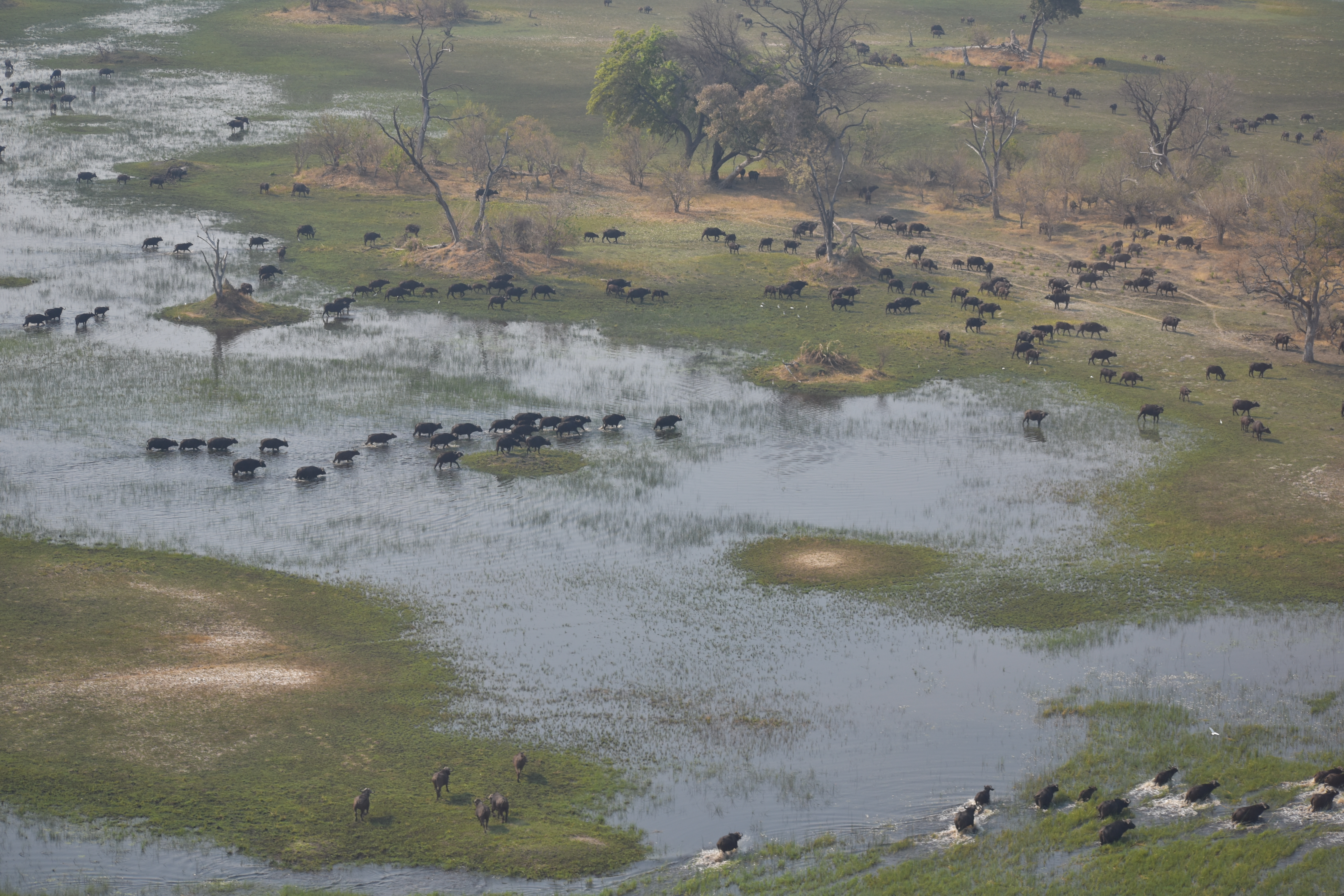
Shaped like a monstrous claw mid-grab, the Okavango Delta is a large expanse of intense green so large you can see it from space. Made up of permanent marshes, the ever-present Okavango River, and seasonal water channels and floodplains, the delta is vast. It shouldn’t really even exist, situated as it is smack in the middle of the Kalahari Desert, a subtropical mass of sand and dry grass and cacti roughly the size of Texas. But here it is, an object lesson in the beauty of thwarted expectations—and the importance of maintaining wild land. It’s a place to which many in the U.S., some 7,500 miles removed, don’t have a connection.
The Flood, narrated by Angela Bassett, is trying to change that by using the tools in Brad’s arsenal: empathy, patience, and a keen sense of narrative. Prides you start to love, a cheetah you can’t help but root for, brother lions who make a dangerous crossing through crocodile-infested waters, a wildebeest mother desperately trying protecting her child from a gang of young lions, all couched in terms of water. We see dribbles creep through dry channels, lake pans fill, and life overflow, and we’re carried through until the delta is, once again, dry.
These aren’t mere scenes—they’re stories. You learn to care about these characters the same way you might care about Sansa and Arya Stark.
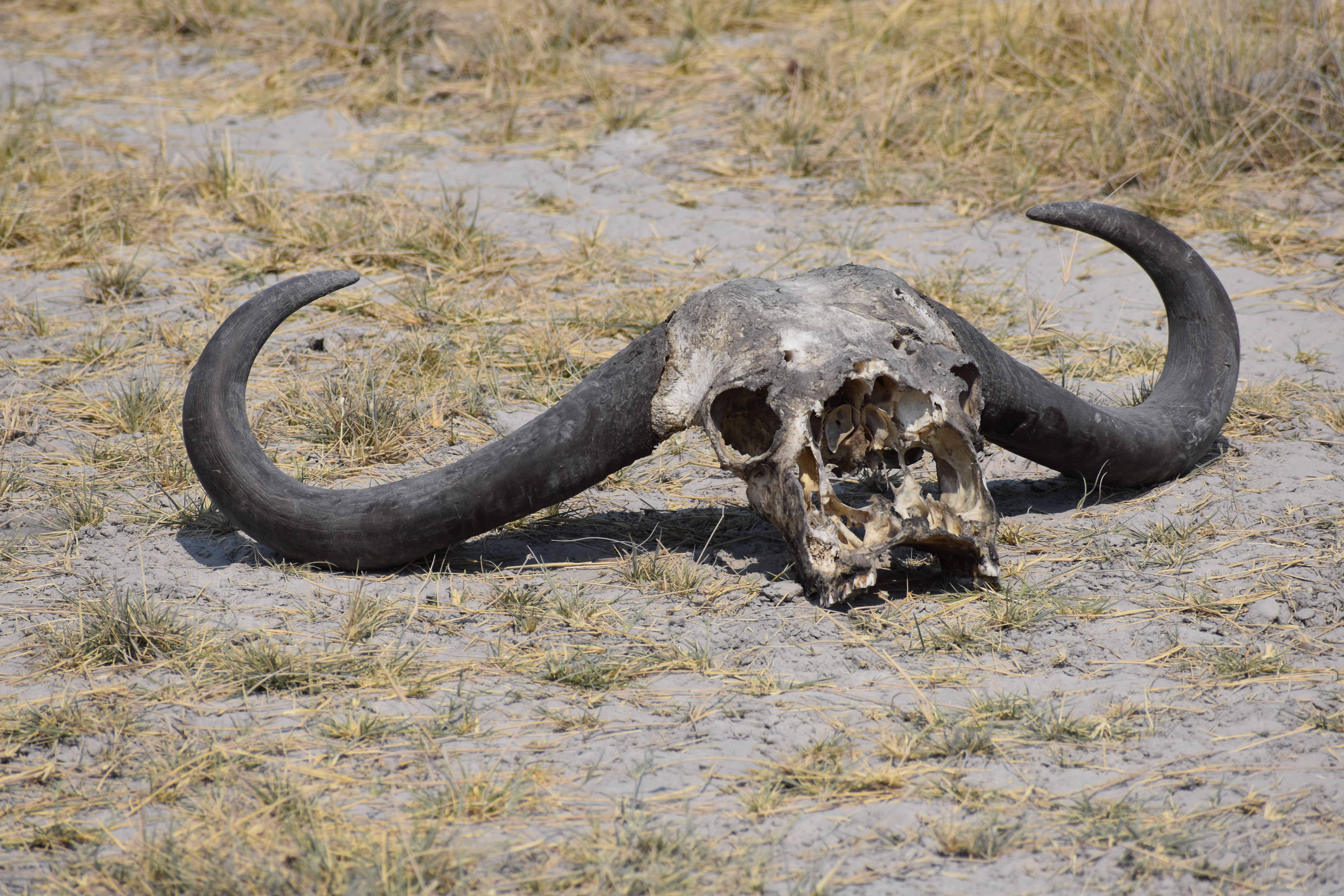
But what of criticisms of wildlife film projects that anthropomorphize their subjects? Brad doesn’t necessarily have a problem with that, he says. In fact, it’s an important tool to make people care.
“There’s no doubt animals have emotions, they have cause and effects, they have reactions.” He punctuates his sentences and emphasizes important words with gentle, sweeping chops as he stares out at the yellow fields of grass surrounding us. “I think the anthropomorphic construct of that is us trying to make those emotions relatable. They may not be exactly what we feel, but it’s a version of that…It’s a necessity of making this accessible to us.”
“Translating it into language that we can understand is the logical course of things,” he says, but he reiterates that he and his crew can’t—and don’t want to—force a narrative. This isn’t a Disney lemming situation: truth is essential for building trust with viewers and allowing them to develop the relationships that will make them care about this region.
“We use [narrative] sparingly when it’s necessary and there’s no real doubt. We’re not over dramatizing a piece of behavior, you can see that is a piece of behavior. When it’s used badly, it’s trying to put human emotion onto animals to try and convince them of something that’s not necessarily happening.”
Aside from believing in them as highly-watchable TV, Brad believes that viewers will see projects like The Flood and the Savage Kingdom series and want to visit Botswana. And that, he says, is not only great for the nation’s economy, but for its wildlife. The more ecotourism, the more incentive to protect these animals.
Sitting next to him in his film truck while he shifts gears and spots animals from afar — warthogs ahead at 11 o’clock, baboons on your three — it’s easy to absorb his sense of ease in a place where enormous predators and skittish giants roam. As we’re discussing drama in the wild, Brad gets a call on the radio: lions.
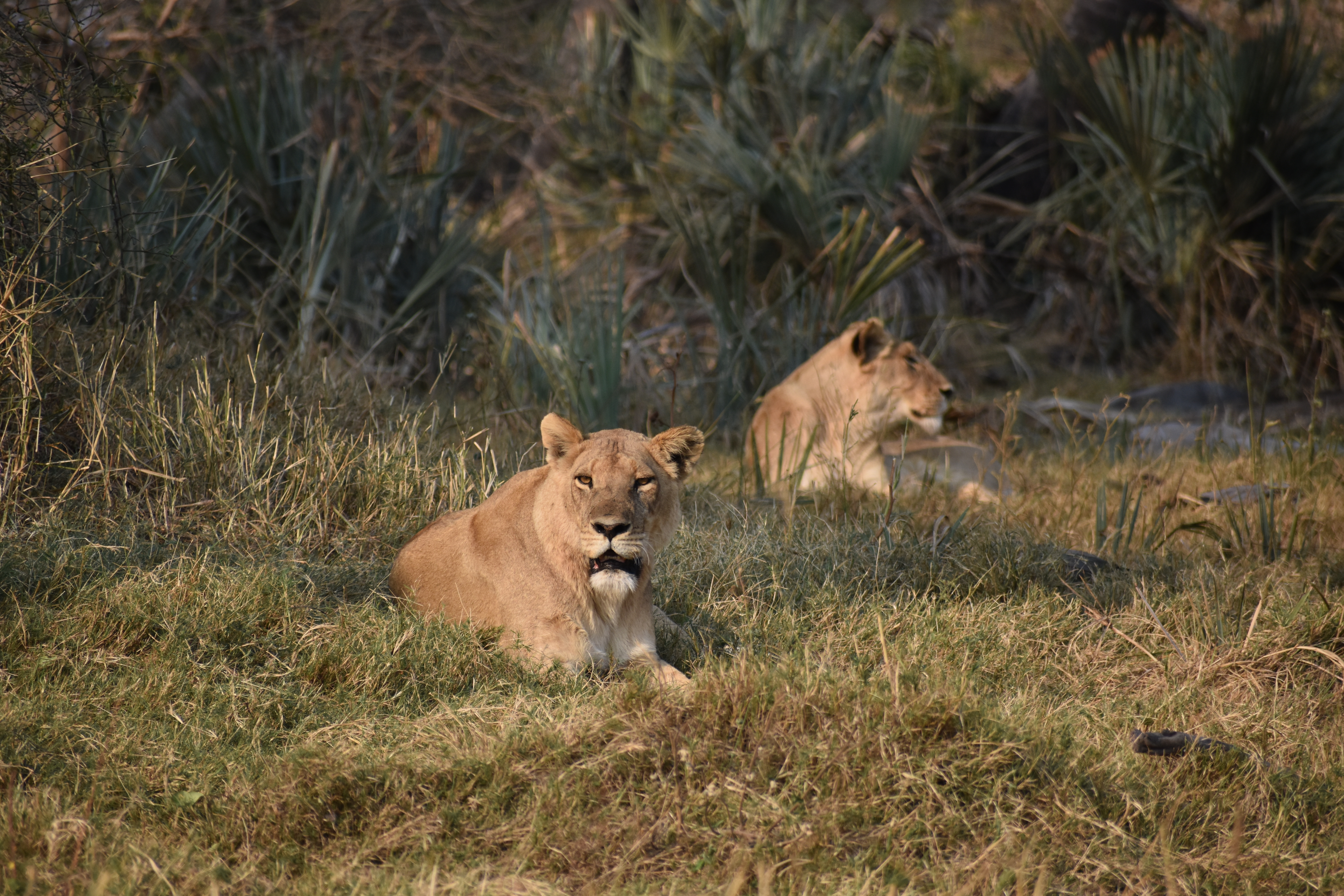
He tells us to hold tight, a smile crossing his face ever so briefly, and guns it through rough track, tall grass, and water deep enough for crocs.
When we arrive to the spot where the sighting was, we see two female lions in repose on a hill—it is, after all, still mid-day, and deadly hot. But what’s more: an elephant in the distance, a female adolescent, according to Brad. She’s watching the two cats from the corner of her eye, and while it’s not unusual to see multiple species in close quarters, what makes this truly extraordinary is the pachyderm’s attitude.
She’s braying, trumpeting her trunk with ferocity and impatience. The lions sit eyeing her, unmoving—until the elephant starts to charge. A few steps in, and the lion closest to danger gets up and moves, and the elephant backs down. This goes on for some minutes—the larger animal seemingly pissed off at the lions’ mere existence.
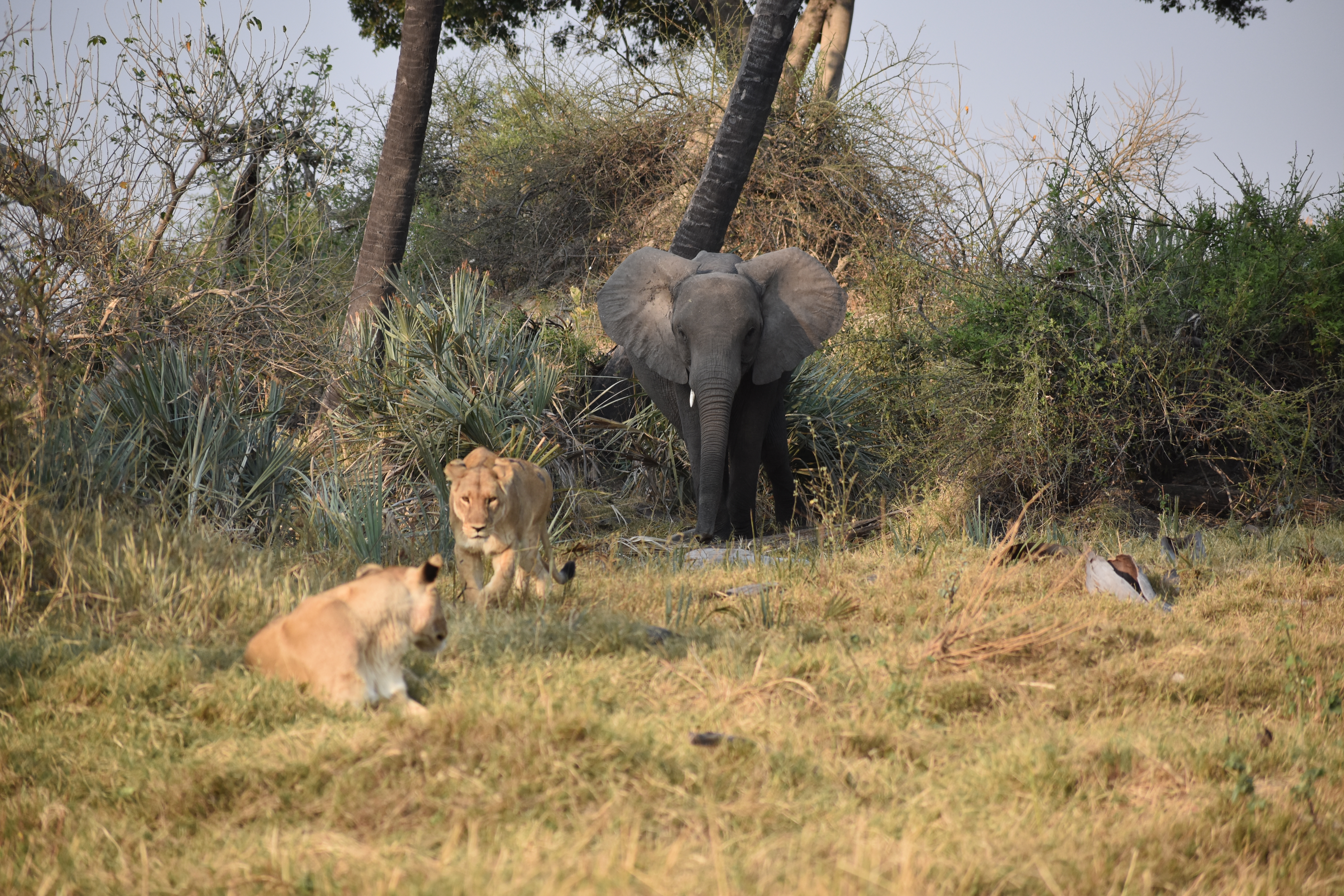
It’s such an extraordinary display that Brad takes out his camera and starts shooting—all while continuing to talk. This is just life for him.
The elephant’s fury puzzles me, but Brad says there’s likely a baby somewhere in the vicinity. Finally, the elephant makes a final charge, pushing the lions back far enough for the rest of the herd to emerge from the trees. And there she is: a newborn, no more than a month old.
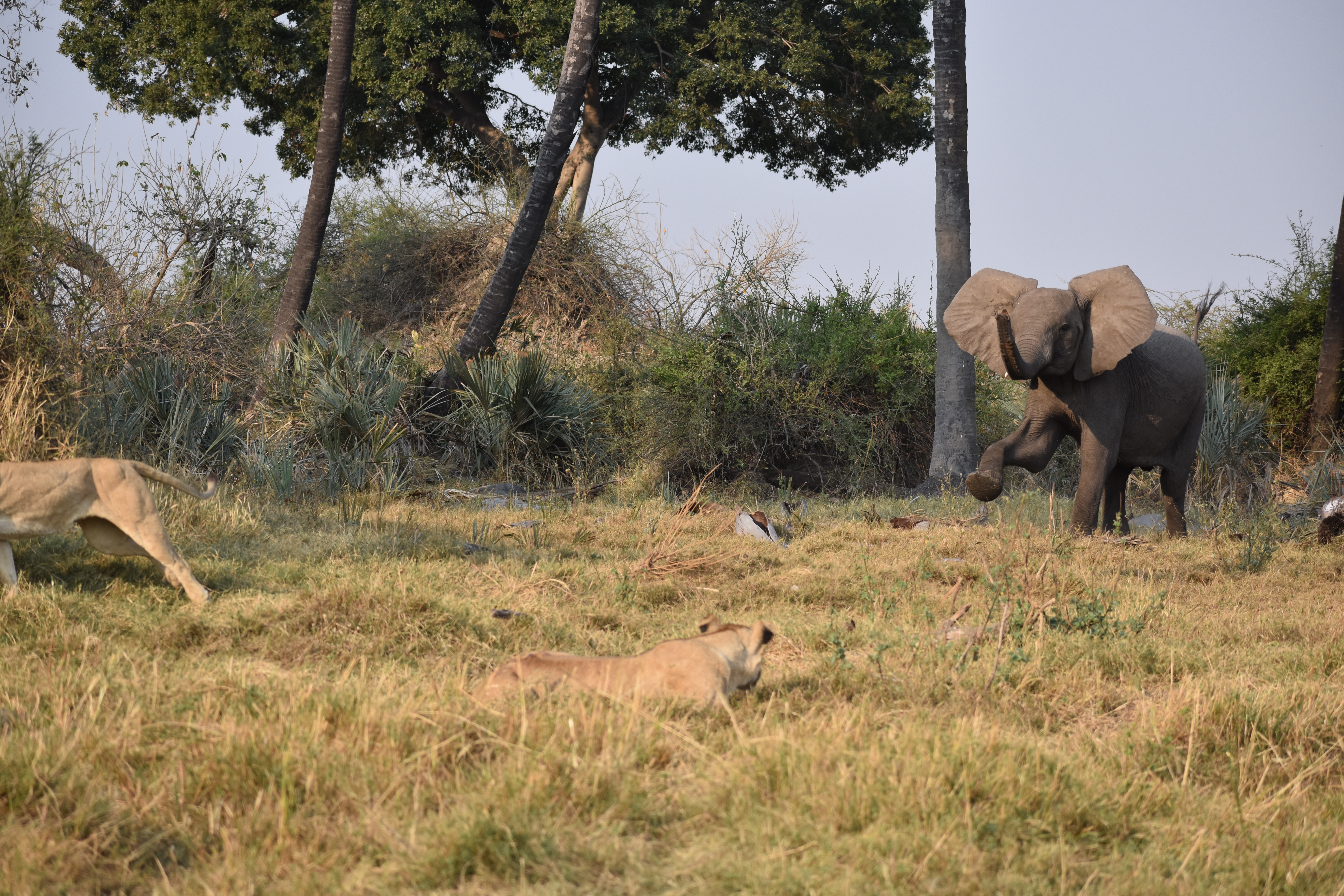
These scene with the lions and elephants is a reminder that everything here has a purpose. There is a reason for every decision made, both by predator and prey. Every attack, every act of aggression, every decision to run. And Brad not only knows how to read his surroundings and the animals he shares his home with—he knows how to capture that.
“Wildlife gives me hope. That’s why I love this place. Being out here, predators particularly, they adapt to circumstance. They’re opportunists, so they’re bright,” he says. “You go out every day knowing that your whole life could change today in terms of what you see. That’s what gives me hope.”
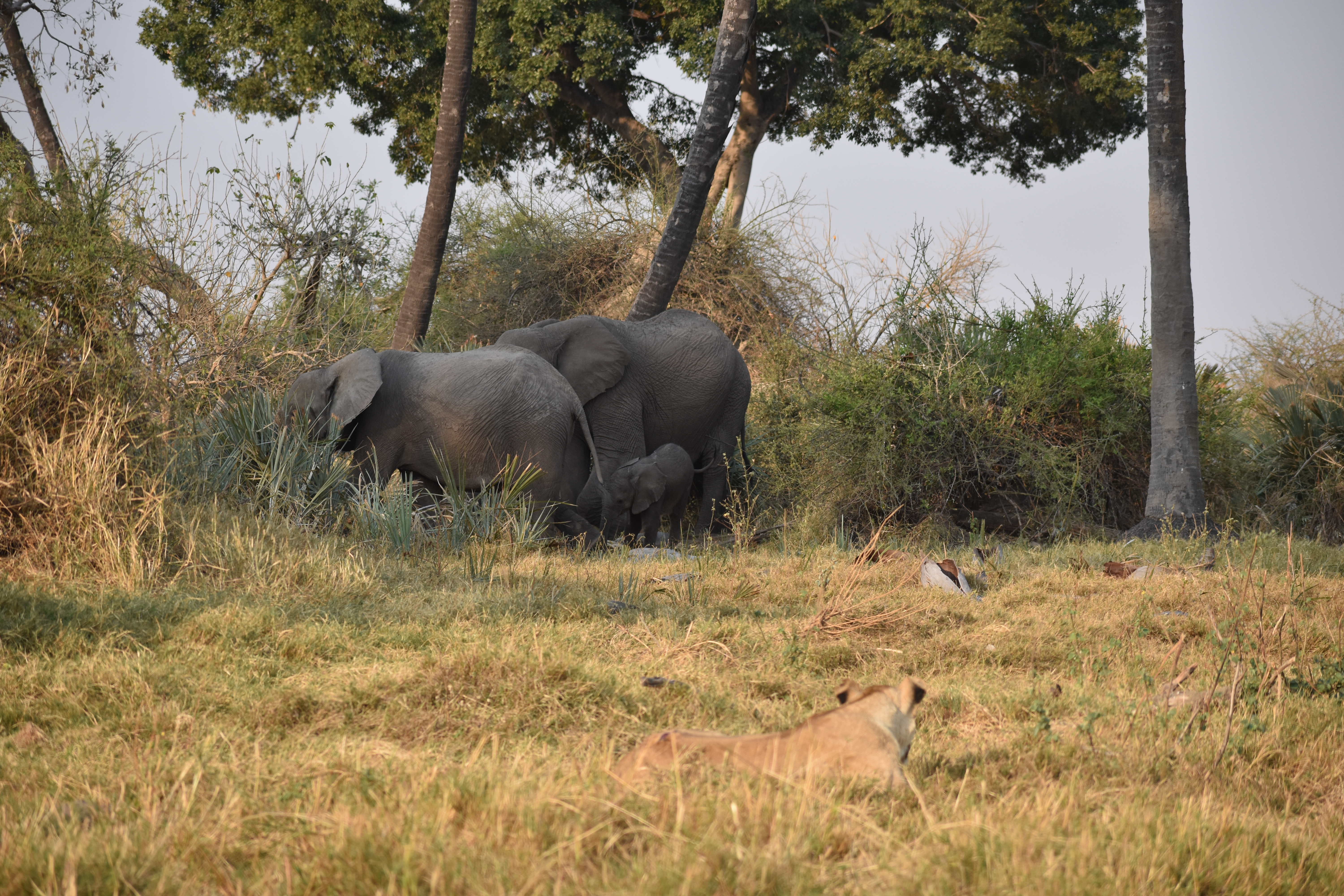
‘The Flood’ premiered Sunday, Nov. 25 at 8 p.m. on National Geographic Channel. National Geographic hosted Uproxx for this piece. You can learn more about the Uproxx press trip/hosting policy here.






